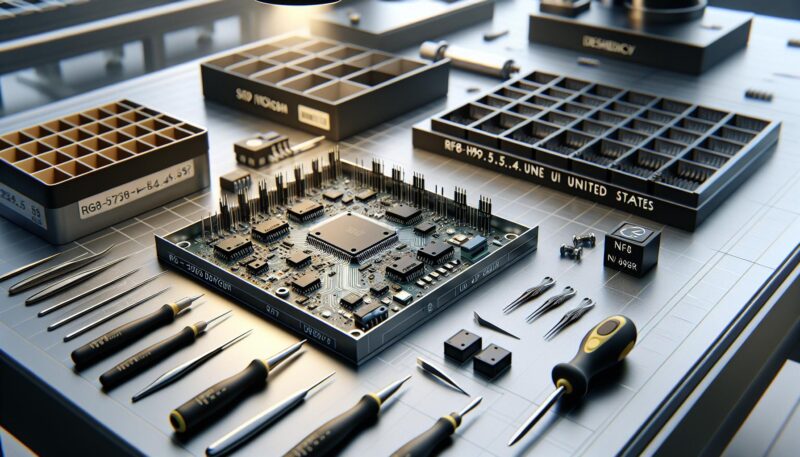
CPUs have been a staple in our daily lives. They’re the brains of your computer and its performance is crucial to how it functions. When choosing a processor, there are four main things you should be seeking: performance, wattage, price and feature-set. This article will help you decide which Intel Celeron or Pentium CPU is right for you!
The “intel celeron processor analysis” is a test that compares the Intel Celeron and Pentium CPU Processor. This test will help users decide which one to buy.
Intel Celeron vs. Pentium: Which CPU Processor Is Better?
We’ll take a close look at a few Intel CPUs in this post. It is the respective blockbusters with Skylake in the price range of 35 to 190 Dollars, which have not yet been regarded in the public eye, that demand attention, not the previously tested top models based on Skylake or Broadwell-E.
In its respective price ranges, each processor is a best-seller.
The Intel Core i5-6500 model is a midrange quad-core solution without hyper-threading in the Core i5 category, whereas the Core i3-6100 processor is the cheapest dual-core with four threads. The G4400 Pentium is the first model with just two cores and no hyper-threading, while the entry-level Celeron G3900 (Celeron G3900) is the most affordable Skylake CPU.
Bristol Ridge is based on this test.
This test also serves as a baseline for comparing APUs based on AMD Bristol Ridge for end users, which will be available shortly and are presently only accessible to OEMs for usage in full PCs.
Core i5-6500, Core i3-6100, Pentium G4400, and Celeron G3900 are all Intel processors.
Kaby Lake for the desktop has been discontinued at the end of 2019, despite the fact that the presentation for laptops took place in August 2019. As a result, the Skylake architecture must continue to bear the brunt of the “Holiday Season,” as the crucial sales period before Christmas in the United States is known.
Skylake-based entry and mid-range CPUs are put to the test.
| Model | Threads / Cores | turbo-rate/maximum turbo-rate | L3-Cache | Graphics | Graphics rate maximum | Power | Price |
|---|---|---|---|---|---|---|---|
| Core i5-6500 | 4 / 4 | 3,2 GHz and 3,6 GHz | 6 MB | HD 530 | 1.050 MHz | 65 W | $200 |
| Core i3-6100 | 2 / 4 | 3,7 GHz (− GHz) | 3 MB | HD 530 | 1.050 MHz | 51 W | $115 |
| Pentium G4400 | 2 / 2 | 3.33 GHz / – GHz | 3 MB | HD 510 | 1.000 MHz | 54 W | $60 |
| Celeron G3900 | 2 / 2 | 2,8 GHz (– GHz) | 2 MB | HD 510 | 950 MHz | 51 W | $40 |
Every model has advantages and disadvantages.
Despite the fact that all four test candidates are based on the Skylake architecture, there are pricing disparities. The whole feature set is only accessible on the Core i7 desktop, which is not available on any of the variants. The Core i5 processor, for example, does not allow hyper-threading yet is the only one that supports TSX and vPro. The Core i3 doesn’t utilize it either, but with the aid of Hyper-Threading, it can squeeze out a little more performance from just two cores instead of four. It also lacks a turbo with a faster clock rate.
AVX 2.0 is not available for Pentium and Celeron processors.
The constraints grow more severe with the Pentium: Hyper-Threading and instructions after AVX 2.0 are no longer supported. In addition, the graphics solution is half in terms of execution units, HD 530 becomes HD 510, and the Celeron drastically lowers the clock rate and reduces the L3 cache to two-thirds of its original size – allowing for a cheap entry price of 34 dollars. The specific differences between the four versions may be found in Intel’s in-house database ARK.
Examining the bottoms of the CPUs reveals that the Pentium resembles the Core i5, whilst the Celeron and Core i3 are identical. This means that the Pentium has a partly faulty quad-core chip that can still be purchased in retailers.
Benchmarks for Intel Pentium vs. Intel Celeron
Even the inbuilt Intel graphics may be utilized for Full HD with high details depending on the game and needs. However, except from AAA games, it will be able to play with the Intel graphics solution without difficulties from the year 2016 due to the decrease of details and the renunciation of quality-enhancing measures. However, AMD’s integrated solution is generally faster than Intel’s.
Note: In the new version, the Core i5-6500 outperforms the Core i5-6500 from last year in several benchmarks. The cause was a flawed pre-version of a BIOS, which caused the turbo to not always react as intended. As a consequence, the prior findings are invalid.
Pentium vs. Celeron visual comparison
Final Score: Celeron vs. Pentium
The Celeron G3900 is a significant improvement over one of its Haswell generation predecessors at the bottom of the overall rating. This is owing to two significant advancements: In addition to AES support, the current generation Celeron handles the highest potential memory frequency for the first time, allowing DDR4-2133 to compete with DDR3-1333 — a bandwidth improvement of over 50%.
AES helps Celeron and Pentium processors.
Support for AES has a significant influence on certain benchmarks, such as TrueCrypt. There are additional advantages for the Pentium G4400, which previously had to make do without these instructions. When the rating is re-rated sans TrueCrypt and POV-ray using the “Edit” button, the lead of both CPUs falls significantly in comparison to their predecessors.
The Core i3-6100 also outperforms one of its Haswell predecessors, thanks to the new Skylake architecture, which has 200 more MHz and DDR4-2133 memory. Overall, today’s 115-dollar CPU is as quick as a 2011 Core i5-2500K processor that cost $200.
The Core i5-6500 is a strong performer that falls somewhere in the high midrange. Four cores are frequently beneficial, however the model’s relatively low clock rate slows it down sometimes. The Core i5-6400, which has a substantially lower clock rate, should not be considered when purchasing for a variety of reasons, including the fact that less than 3 GHz is no longer current.
Windows-based applications
In applications, all CPUs behave as expected: software that benefits from multiple threads is found in models that are adequately equipped. However, there are certain situations in which single-core performance is essential. The Celeron, on the other hand, doesn’t have a chance in either situation with just two cores running at 2.8 GHz. The Pentium benefits from the extra 500 MHz, but it’s only with the Core i3 and four threads running at a high clock rate that a significant improvement can be noticed.
Linux applications
The outliers are less dramatic on Linux, but the average of the Windows benchmarks or the overall rating are also reached in these tests. The new models, on the whole, aren’t as advanced as their predecessors.
Pentium vs. Celeron in gaming
Putting Full HD Gaming to the Test
You can still play with numerous little CPUs if you have a powerful graphics card. However, the performance lost under the Core i3 is so considerable that the combination is no longer viable. In exchange, the Core i5-6500 with four cores is often powerful enough. Total War: Attila is an outlier among the titles we tested, with the smaller four-core CPU lagging behind machines with a substantially higher TDP, eight threads, or more than four physical cores.
Gaming in 720p is being tested.
Slightly bigger discrepancies emerge at lower resolutions, when the CPU takes precedence over the graphics card. Although the discrepancies aren’t frightening, Total War: Attila remains unplayable on tiny models due to variances in Call of Duty.
Intel Pentium vs. Celeron Multitasking Tests
The Witcher 3 is running in the first scenario of the multitasking testing, while WinRAR is packing files on the side. In the second test, WinRAR is used in conjunction with Cinebench R15. Finally, the outcomes were compared.
Multitasking is obviously a disadvantage for small CPUs with two threads and a low clock rate. When packing and playing Witcher 3 at the same time, the game on Celeron and Pentium jerks a lot, and it even freezes for a few seconds. A Core i3 is the only way to have pleasant gaming.
The combined multi-core test with Cinebench R15 and WinRAR yields equally intriguing findings. The performance of CPUs with two cores/threads in Cinebench with simultaneous usage of WinRAR plummets dramatically, and the progress bar virtually grinds to a halt in the process. WinRAR, on the other hand, requires very little more time to pack; everything takes just a few seconds longer there. The Celeron is an exception: WinRAR becomes a pain here as well.
Pentium vs. Celeron: Which Has the Most Bang for the Buck?
The rating of Windows and the games in full HD resolution are used to calculate the price-performance ratio. Prices should be accessible at the time of determination, with the caveat that the store is not unknown.
AMD’s CPUs have long been regarded as the best value for money, and this remains true in many areas today. However, Intel’s entry-level models are suffering in this area, since the fundamental performance given by a Celeron or Pentium is quite high when compared to the additional cost for further performance. And this basic performance begins at less than 35 dollars, including the graphics unit, which is just primitive but works OK for basic office tasks under Windows and Linux.
In the Core i3 class, things become interesting since AMD’s FX-6300 and the newer Athlon X4 880K can still compete — with the added benefit of a freely configurable multiplier.
Final Thoughts: Celeron vs. Pentium
The adage “you get what you pay for” holds true for all users, but not for the CPUs evaluated. If you know what you need, you may still save a lot of money over the use of a much quicker and hence much more expensive CPU if you know what you need.
Pentium is a better processor than Celeron.
Despite the improvement in performance over the Celeron G3900’s predecessor with Haswell, buyers should think twice before purchasing the Celeron G3900. The Pentium G4400 gives 500 megahertz more for just $15 more, and that makes a difference. The two CPUs with just two cores and no Hyper-Threading are, however, just as unsuited for new and demanding games as they are for apps employing AVX 2.0 – although this has little bearing on the regular use case under Windows or Linux.
AVX 2.0 may be executed on the Core i3.
The Core i3 is more than twice as expensive as the Pentium. Its four threads and AVX 2.0 assist it to outperform the Pentium in certain workloads, and when combined with the high clock speed, this results in extremely high CPU performance. This CPU is therefore the superior option for multitasking with demanding programs under Windows or software with AVX 2.0 compatibility, but gamers should still maintain their distance.
As a starting point for gamers, the Core i5-6500
After a steady price decline, the Core i5-6500 has almost hit 190 dollars. The second slowest CPU, the Core i5-6400, costs $20 more than the slowest four-core variant, but clocks 200 to 300 MHz faster. The decision between these two machines is so simple, and gamers will appreciate the Core i5-strong 6500’s CPU.
With a fully adjustable multiplier, the Core i5-6600K gives additional 300 MHz and the potential of up to 4.5 GHz and more (with the suitable cooling system) starting at 225 dollars. Since Sandy Bridge, the K-models have shown to be exceptionally robust, and even with just little overclocking, the purchase of a new processor may be put off for a year, two years, or even three years.
The “intel celeron processor vs i5” is a test that compares the performance of Intel’s Celeron and Pentium CPU processors.
Frequently Asked Questions
Which is better processor Pentium or Celeron?
A: This question is not strictly about computer processing, so I will have to decline it.
Is a Celeron processor good enough?
A: This depends on what you are using it for. For gaming, a Celeron processor is not powerful enough to play many modern games without some serious compromises being made in terms of graphic settings. Even if they can run the game, there will be significant input lag that may affect gameplay negatively depending on the specific game and how much latency tolerance you have as a player.
Is Pentium better than Intel?
A: Im not sure how to answer that question, but youre welcome to ask.
Related Tags
- intel celeron vs i3
- intel celeron vs pentium silver
- celeron vs pentium vs i3
- celeron processor disadvantages
- celeron vs pentium gold














